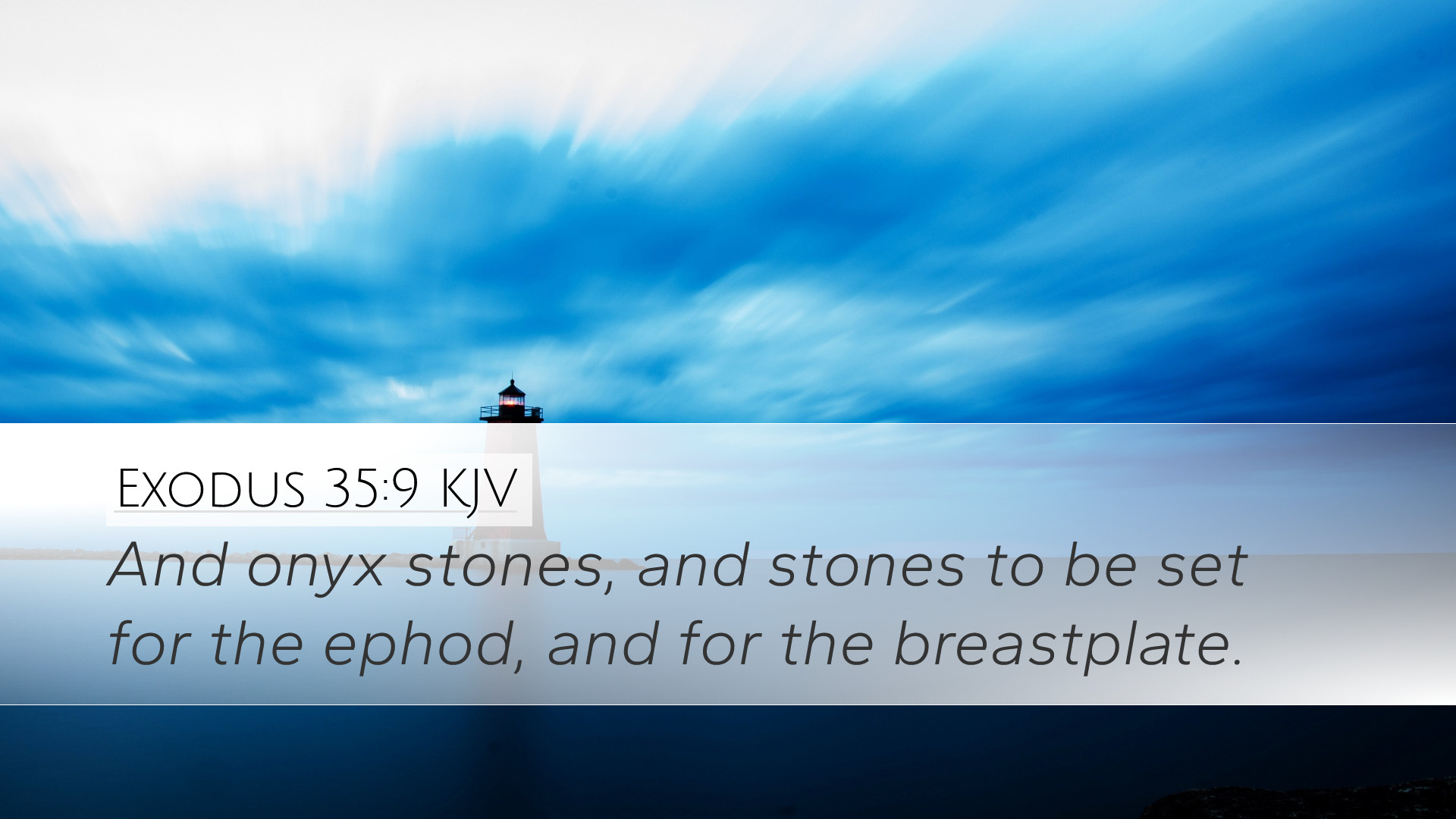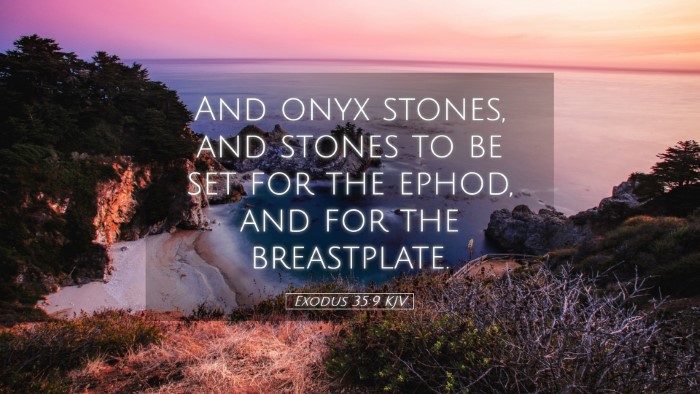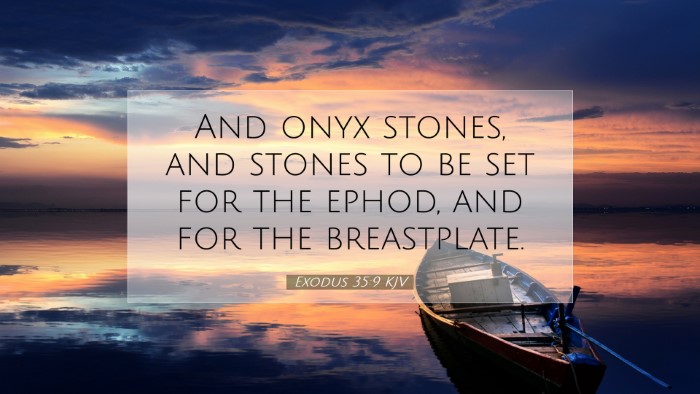Exodus 35:9 - Commentary
Exodus 35:9 states: "And the blue, and purple, and scarlet, and fine linen, and goats' hair." This verse is part of a larger passage where the Israelites are instructed concerning the materials needed for the construction of the Tabernacle and its furnishings. The verse explicitly lists the various materials that were to be collected for the service of God, marking a pivotal moment in the preparation of this sacred space.
Contextual Significance
The preceding chapters outline the divine instructions given to Moses on Mount Sinai regarding the construction of the Tabernacle. Exodus 35 is significant because it is an operational response to these divine revelations. It emphasizes the generosity and willingness of the people to provide for the worship of God.
Material Types and Their Symbolism
- Blue: Often associated with the heavens and divine revelation. Its presence in the Tabernacle signifies the divine nature of the worship that will take place within.
- Purple: This color represents royalty and dignity. Its inclusion speaks to God’s kingship and the noble purpose of the worship setting.
- Scarlet: Typically linked with sacrifice and atonement, indicating the need for blood and sacrifice in the relationship between God and His people.
- Fine Linen: Represents purity and righteousness. This material underscored the holiness expected in the place of worship.
- Goats' Hair: A more practical material, often used for the outer coverings of the Tabernacle, signifying humility and simplicity.
Theological Implications
The meticulous detailing of the materials serves not just a functional purpose, but also educates the community about the holiness required in approaching God. The importance of using the best offerings is underscored, as it reflects the necessary attitude of the worshippers.
Commentary Insights
Matthew Henry
Matthew Henry emphasizes the call for the people to bring their best materials for the construction of the Tabernacle. He notes that God treasures the willingness and generosity of His people, and that the collection of these materials was a collective act of worship. Henry further highlights that the method for approaching God is rooted in preparation, suggesting nothing should be given to God that is less than our best.
Albert Barnes
Albert Barnes agrees and expands on the notion that the items listed are not just for physical construction but symbolize the community’s unified effort to honor God. He posits that these materials reflect God’s glory and majesty and should inspire reverence in the worshippers. Barnes also delves into the significance of each material, interpreting them as a reflection of God’s attributes—His sovereignty, purity, and the need for redemption through sacrifice.
Adam Clarke
Adam Clarke focuses particularly on the practical aspects of the components listed. He explains the textiles not only served a ceremonial purpose but were also indicative of the lifestyle and resources of the Israelites. Clarke discusses each material’s historical context and its availability to the people, emphasizing that the collection was an expression of gratitude to God for His provision and care.
The Call to Generosity
The call to gather these materials is a powerful reminder of the communal aspect of worship and service. Each member of the community is invited to contribute, highlighting the importance of participation in faith-driven activities. This systematic gathering reflects the Israelites' collective identity and their commitment to God.
Conclusion
Exodus 35:9 serves as a profound lesson on preparation for worship, the nature of offerings, and the communal aspects of faith. It highlights the significance of contributing our best for sacred purposes, reminding us that our approach to God must be marked by holiness, reverence, and generosity. The insights provided by historical commentators like Henry, Barnes, and Clarke offer timeless principles that continue to resonate within Christian teaching and practice today.


